
1998 Proceedings
1998 Photos
 1998 Proceedings 1998 Photos |
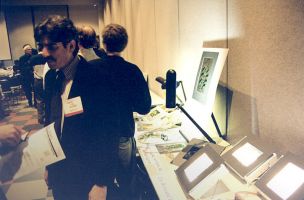
| The Slide Factory (San Francisco, CA) demonstrated the StereoJet full-color polarized 3D prints and transparencies - using technologies recently developed at the Rowland Institute for Science (Cambridge, MA). The images are generated by placing a special substrate in a standard ink jet printer loaded with a special ink reservoir. Linearly polarised 3D glasses are worn to view the 3D image. |
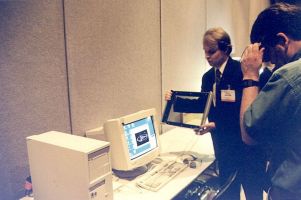
| David Qualman is pictured demonstrating the 3D-Spex liquid crystal shutter glasses, the 17SX stereoscopic shutter kit and WinSPEX/3D stereoscopic imaging software from NuVision Technologies. |
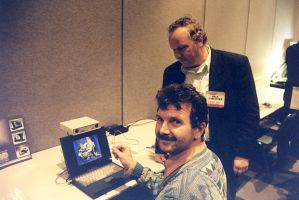
| Armin Schwertner of Dresden Technical University (Germany) displayed the Dresden 3D display - a parallax barrier based stereoscopic display which utilizes head/eye tracking. |
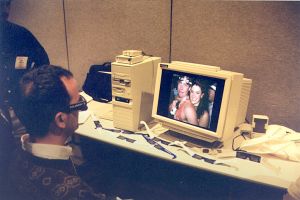
| StereoGraphics Corporation (San Rafael, CA) demonstrated the Z-Screen (active polarization shutter for field-sequential CRT displays). |
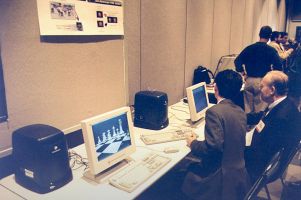 | 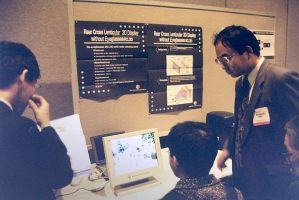 |
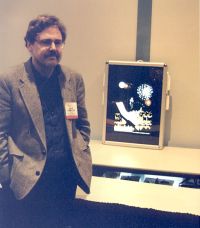
| Hakan Lennerstad of the University of Karlskrona/Ronneby (Sweden) demonstrated the directional display - a parallax barrier based autostereoscopic display. |
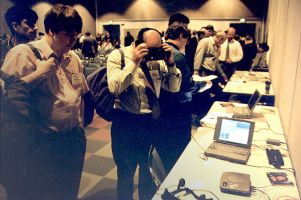
| Ilixco (Menlo Park, CA) demonstrated the re-released i-glasses and the VGA resolution ProTec i-glasses (formerly manufactured by Virtual i-O). |
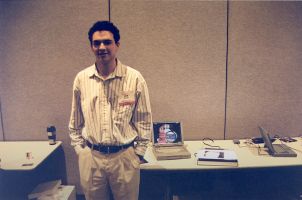
| Adam Kalai of Carnegie Mellon University demonstrated material in support of his paper presentation. |
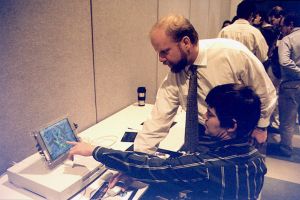
| John Miller demonstrated a parallax barrier autostereoscopic display operating from a Macintosh computer to Brad Nelson. |
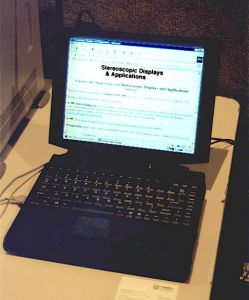
| The Stereoscopic Displays and Applications website (this site) was demonstrated on an internet connected PC supplied by David Mark. |
| (pictured right) Stephen Kurtzer of 3-D Video, Inc. (Santa Barbara, CA) demonstrates the NuView camcorder attachment. (pictured below) The device attaches to the lens of standard camcorders allowing the filming of field-sequential 3D video. (pictured bottom right) Live and pre-recorded 3D video from the camcorders was displayed in a 3D window on a Windows PC system supplied by Mike Weissman. |
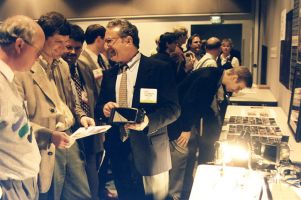
|
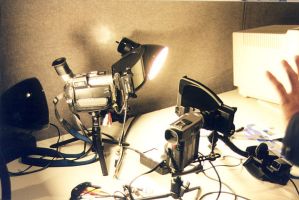
|
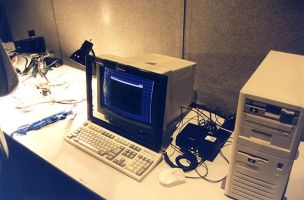
|
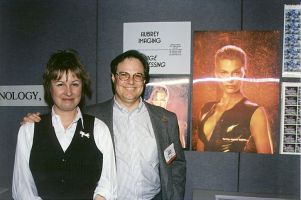 | 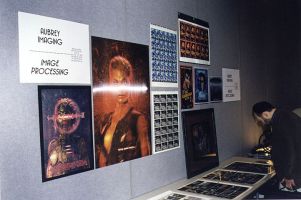 |
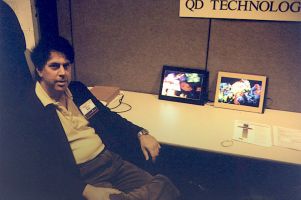
| David Mark from the Planetary Society displayed two parallax barrier images of fluorescent minerals for use in museum displays. |
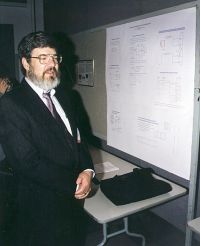
| John Bercovitz from Lawrence Berkeley National Lab. presented the poster presentation of his paper "Image Side Perspective and Stereoscopy". |
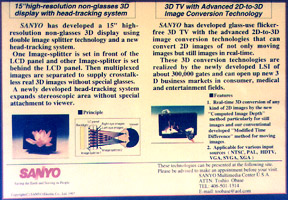
|
Sanyo (Japan) presented a small poster about their autostereoscopic display and 2D to 3D conversion technologies.
|
In addition to the hardware demonstrations, 3D videos and 3D slides were shown in the separate screening room.
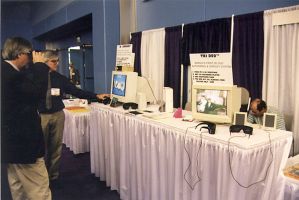 | 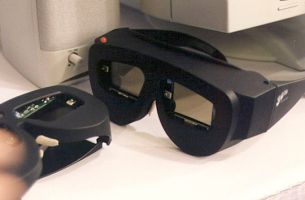 |
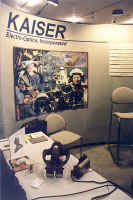
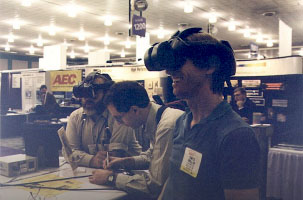
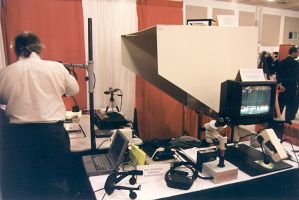 | 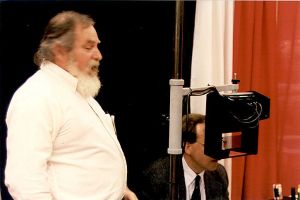 |
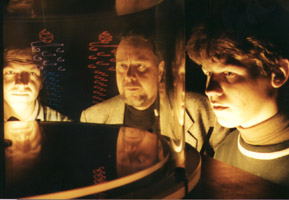
| The Felix volumetric 3D display was demonstrated by Detlef Bahr (Technical University of Braunschweig) (left) and K. Langhans (Director of Studies at Vincent-Lubeck High School) (centre). |
All photographs (except Felix) © 1998 Andrew Woods.
